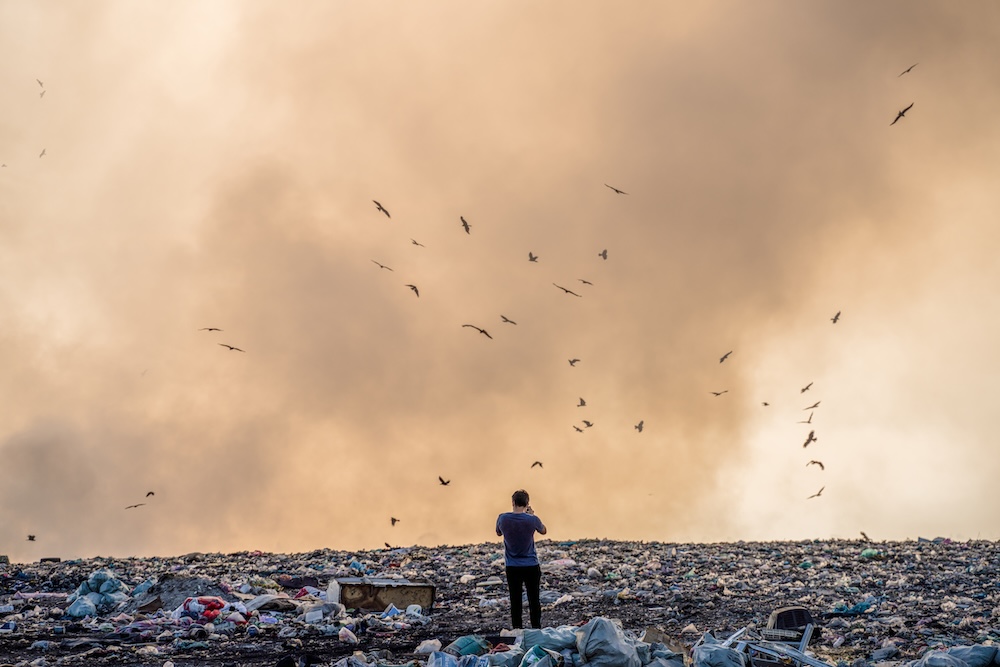Every banana peel, pizza box, or half-eaten sandwich tossed into a landfill sets off an invisible chain reaction. Beneath the surface, layers of buried waste break down without oxygen, releasing methane — a greenhouse gas up to 84 times more potent than carbon dioxide over a 20-year period. Today, landfills are the third-largest source of human-caused methane emissions in the United States, and tackling this hidden problem is central to addressing climate change.
What Drives Methane Generation in Landfills?
Food Waste: The #1 Culprit
Food waste is the largest driver of landfill methane. Although it makes up less than one-quarter of municipal solid waste, it is responsible for an estimated 58% of fugitive methane emissions. That’s because food decomposes rapidly, producing methane long before gas collection systems can be installed.
Circular action: Diverting food scraps into composting, anaerobic digestion, or donation programs prevents this methane at the source.
Paper and Cardboard: Slow but Steady Emitters
While paper and cardboard break down more slowly than food, they still represent a massive share of methane potential in landfills. Corrugated boxes, composite papers, and discarded packaging account for roughly 40% of landfill methane generation combined.
Circular action: Recycling or reusing paper products keeps them out of landfills and cuts methane production at the root.
Inefficient Gas Capture Systems
Even with modern infrastructure, methane slips through the cracks. Closed landfills typically capture about 84% of gas, while active, open sites capture closer to 67%. That means anywhere from 4–10% of methane escapes directly into the atmosphere, even under best-case scenarios. Cracks in liners, faulty wells, or unmonitored hotspots make the leakage worse.
Circular action: Remote monitoring systems and upgraded extraction technologies can dramatically increase recovery and efficiency.
Surface and Hotspot Leaks
Not all methane escapes through pipes. Some leaks rise invisibly across landfill surfaces or concentrate in “super-emitter” hotspots. Recent satellite studies show methane emissions from landfills are about 50% higher than EPA estimates, underscoring the scale of unmonitored releases.
Circular action: Continuous monitoring — both surface inspections and satellite tracking — ensures super-emitters are quickly identified and fixed.
Regional Hotspots: Big States, Big Emissions
Landfills in Texas, California, Florida, Ohio, and Georgia lead the nation in methane output, correlating with population density and waste volume. Without aggressive diversion and capture policies, these states will continue to drive outsized emissions.
Circular action: Expanding compost infrastructure and renewable natural gas (RNG) projects in high-volume regions reduces both climate impact and reliance on fossil fuels.
What’s Changed in Recent Years?
- Food waste is rising: As more food is discarded, its share of landfill methane continues to grow.
- Super-emitter events: Satellite monitoring has revealed large, previously undetected methane plumes.
- Energy recovery projects: Examples like the Tessman Road RNG project in San Antonio now convert methane into clean fuel for hundreds of buses, cutting diesel use and emissions.
FAQ
How much methane does food waste produce compared to other materials?
Food waste generates methane at a faster rate than any other landfill material. Though only about 24% of waste by weight, it accounts for over half of total methane emissions.
Can older landfills be retrofitted with better capture systems?
Yes. Many closed or capped landfills have been retrofitted with advanced extraction wells and monitoring systems, though efficiency rarely reaches 100%.
Is capturing methane a complete solution?
No. Capture reduces harm but cannot fully eliminate emissions. Prevention — keeping organics and recyclables out of landfills — remains the most effective approach.
Final Thoughts
Landfill methane is both a climate threat and a climate opportunity. By addressing top generators like food and paper waste, strengthening capture systems, and expanding compost and energy recovery solutions, communities can turn methane from a liability into a resource.
Small shifts — composting at home, supporting zero-waste policies, or choosing products designed for reuse — create ripples that, together, can reshape how society manages waste. And those ripples grow into waves strong enough to cut one of the most potent climate pollutants of our time.









Reader Interactions